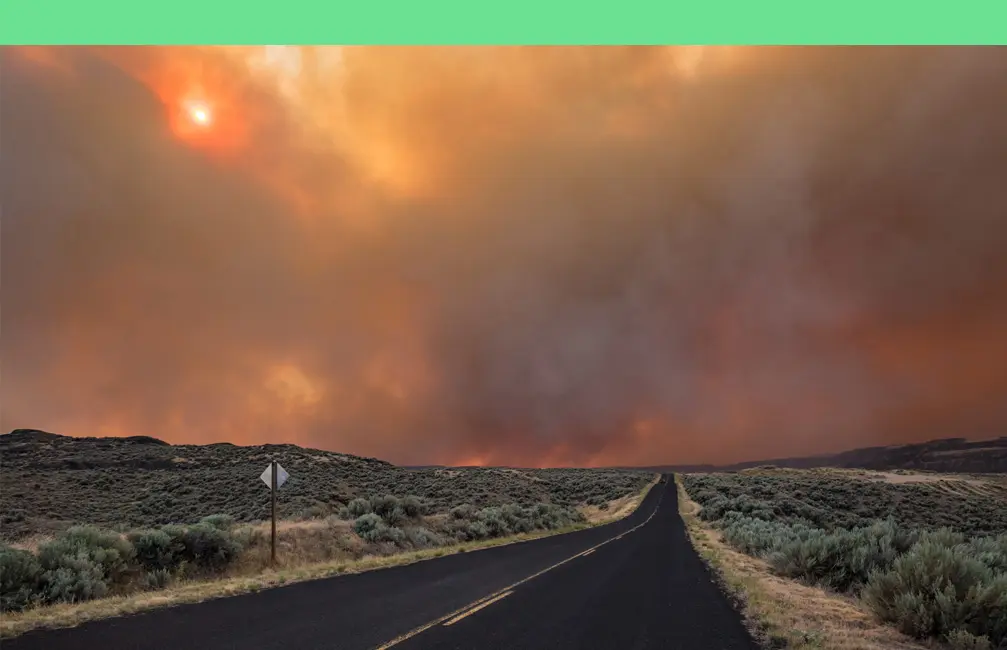By: Sarah Dobie, Ph.D., Lisa O’Fiesh, Jaela Alvarez, and Sri Vedachalam, Ph.D.
The Northwest region is home to over 14 million people and 43 Federally Recognized Tribes. The Northwest is one the most ecologically diverse regions in the United States consisting of 16 National Forests and a National Grassland comprising over 24.7 million acres. The region is also an economic hub with its forestry and agricultural industries bringing in over $7 billion and $19 billion annually, respectively. Washington is the nation’s leading producer of apples, Oregon produces 17 percent of the country’s cherries, and Idaho produces nearly one third of the nation’s potatoes every year.
The region faces challenges from climate change that could limit its economic viability and threaten the health and wellbeing of its residents. To help the region adapt, we have provided an analysis of climate change risks and opportunities based on findings from the Fifth National Climate Assessment (NCA5) – a congressionally-mandated assessment of climate change impacts across the United States. We highlight two insights from the NCA5 and identify two priority actions for the region.
Insight #1: The Northwest faces significant health and economic impacts from climate change
The Northwest region has already experienced a significant increase in its average annual temperatures, rising 2°F since the 1900s. There have also been changes in precipitation patterns, causing greater frequency of extreme droughts, floods, and heatwaves. Underserved communities have been especially impacted by these hazards. Changes in temperature and precipitation are also causing increased wildfires. The last four decades have experienced more wildfires than any other period in history. Between 2004 and 2009, respiratory hospital admissions from wildfire smoke increased by a staggering 7.2 percent.
Climate change has had unprecedented health and economic impacts. The 2021 heat dome, for instance, was an unprecedented event that caused a significant spike in emergency room visits from heat-related illness (Figure 1). It also caused issues with agriculture and fishing – causing crop losses and a ‘perfect storm’ for shellfish die-offs. The impacts of marine heatwaves on the fishing industry is a growing problem causing an estimated $3.2 billion in economic losses from 1994 to 2019. The region is also expected to see its annual snowpack cut in half by the 2040s, which would threaten its outdoor tourism and recreation industry – an industry worth $51.9 billion annually and that employs 588,000 people.

Figure 1. Number of heat-related emergency room visits in the Northwest during the 2021 heat dome event. Source: NCA5; credited to Schramm et al., 2021.
Insight #2: The Northwest is a leader on climate action
The Northwest has taken significant action to mitigate climate change, with the states of Washington and Oregon among the top states in the nation. Washington and Oregon, have taken large statewide steps to mitigate and adapt to climate change at comparable levels to the Northeast and Southwestern regions. Idaho is the only state in the Northwest that has failed to create an emissions wide reduction target and has the least amount of cities with emission reduction targets compared to Washington and Oregon.
Progress on state-level adaptation has not been as extensive, but the region offers some examples of local governments leading the nation. Perhaps even more significant, the region includes cities that are national leaders on climate justice. For example, Seattle’s Green New Deal Resolution (Res 31895) and Green New Deal Executive Order (EO-2020-01) passed in 2019 includes a strong emphasis on climate justice and oversight by the City’s Environmental Justice Committee. These documents have not just sat on the shelf either and have been foundational to several of the City’s new policies and plans, enabled by the use of tools like interdepartmental teams.
What can cities in the Northwest do to prepare for climate change?
Recommendation #1: Incorporate nature-based solutions to enhance climate resilience
Nature-based solutions (NBS) have the potential to help the Northwest region tackle multiple climate challenges simultaneously. NBS can help to reduce GHG emission while mitigating risks from water-related hazards (e.g., flooding, stormwater pollution), extreme heat, and declining air quality impacts from wildfires. There are a wide range of NBS that can be useful in urban and rural/natural areas, such as green stormwater infrastructure (GSI), reforestation, and wetland and riparian habitat restoration. This can also help to mitigate the anticipated impacts on the outdoor recreation and tourism industry, which is heavily dependent on natural resources.
Recommendation 2: Center community values and Indigenous knowledge in climate resilience efforts
Centering community values and Indigenous knowledge will be key to implementing these NBS. Traditional Indigenous Knowledge (TEK) is increasingly being recognized as an important strategy for climate adaptation, especially for natural resources management that is resilient to wildfires. Similarly, centering community knowledge and values can help to build trust and provide additional insights not captured by climate and environmental justice mapping tools.
In summary, the Northwest leads in climate action and policy innovation, but more work is needed to achieve a resilient and equitable future. The region can drive meaningful change by expanding nature-based solutions and using Indigenous knowledge to bring comprehensive solutions to social, economic, and environmental areas, making sure every community, especially those most at risk, moves forward together.



